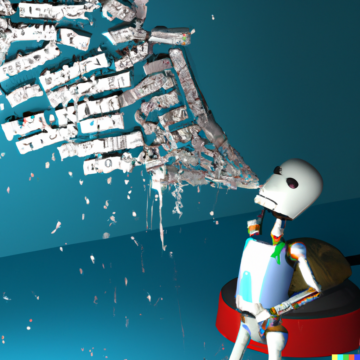As employees head back to office, anxiety regarding health is becoming a collective issue that can impact productivity. The transition back to office will not be smooth because of anxiety regarding health safety.
Employees in a post-pandemic work setting is bringing new challenges for both employers and employees. While the pandemic proved the importance of prioritizing health over everything else, it also paved way for technology to emerge as the guiding light to stay afloat.
Read more: Six reasons why HR is taking centre-stage in the post-COVID-19 workplace. Is your startup geared up?
The year ahead is fraught with anxiety for employees as well as employers. How can HR use technology to manage employee anxiety?
The Tech Panda spoke to Barun Mallick, HR expert and Product Marketing Manager of Keka HR, a startup focusing on solving complex HR problems in a simple and intuitive way.

Barun Mallick
Application of technology through HR software will help identify bottlenecks and discover solutions for them. Engagement tools are also on the rise, which are expected to fuel employee engagement further
“2021 will witness a massive digital transformation, if not anything more.
“HRs are realizing the importance of goal-orientation and soon, micro-monitoring will not be possible to practice as everyone will become goal-oriented, taking complete ownership of their work. This will eventually also change the way performance management systems are perceived. While these are used for appraisals today, in the future, the tool will be utilized in its sense,” he says.
Remote working has thrown up new challenges for HR. Again, technology steps in.
“Due to the remote working model, performance management systems will be used to evaluate the performance and efficiency of employees. With the added role of LMS-integrated platforms, work will see a new phase,” he adds.
Of the many emerging technologies that are assisting HR, Artificial Intelligence (AI) and Machine Learning (ML) are clearly at the forefront.
“Insights and analytics are due to become the key aspects in everyday worklife, and AI will become a strong partner for it. Application of technology through HR software will help identify bottlenecks and discover solutions for them. Engagement tools are also on the rise, which are expected to fuel employee engagement further,” he says.
The Tesla of HR Products: How Keka Works
Keka provides HR automation services in the Indian SME industry. The company has all the essential features and modules of today when physical contact and regular meetings have become antique elements of a workplace.
Keka started when Vijay Y and Sashi P wanted to implement an HR software in their growing IT services organization. But being phenomenally disappointed by the existing HR products in the Indian market and their poor user experience, they took it upon themselves to create an HRMS product which the Indian HR fraternity truly deserved.
Its efficient product has allowed HRs to leave the mundane and tedious tasks to the software and focus on the vital assets of the company, its employees
Thus in 2015 the Keka product journey began. Unlike the traditional HR systems, Keka focused on solving complex HR problems in a simple and intuitive way. The product enables organizations to manage their HR processes from hire to retire while ensuring an awesome user experience to the employees.
The startup coined the term Employee Experience Software and has been embraced by 3000+ organizations within just 4.5 years. They call themselves the Tesla of Indian HR products.
“Its efficient product has allowed HRs to leave the mundane and tedious tasks to the software and focus on the vital assets of the company, its employees,” says Mallick.
Re-entering Office
As health is uppermost on employees’ minds while returning to physical work environments, keeping in mind the necessity of maintaining social distance, employee roster, and shift management can be highly beneficial, says Mallick.
“If employees are aware of their colleagues’ schedule and arrival time at the office, they can shape their timings accordingly to ensure everyone doesn’t come at the same time and crowd the workspace,” he says.
Touchless face attendance system is another feature that can be used to avoid getting in contact with frequently touched surfaces.
HR can do more by enhancing the employee health and benefits cards and offering more valuable services that can be utilized by employees to keep themselves protected and also get the best healthcare when unfortunate instances occur
“This matched with a temperature screening kiosk, which will update the readings in the HR software will safeguard all workers’ health,” he explains.
A hybrid working model would add to this list as three days of WFH and two days of regular office space working will allow employees to breathe freely without the pressure of being at office every day, putting their health at risk, he recommends.
“HR can do more by enhancing the employee health and benefits cards and offering more valuable services that can be utilized by employees to keep themselves protected and also get the best healthcare when unfortunate instances occur,” he adds.
AI in HR
Though AI is still in the process of being completely embraced by HR, especially in India, several are making it a central pillar when deciding on HR process improvement initiatives. According to Mallick, recruiting, skills management, and learning and development (L&D) are the top three departments where AI is increasingly being adopted.
Time-consuming tasks, unstructured data, and complex decisions that are bound to have some degree of bias are being handled by the AI today, leaving no window for mistakes to creep in
“HRs are able to analyze, predict and diagnose problems better, paving way for better business decisions. Time-consuming tasks, unstructured data, and complex decisions that are bound to have some degree of bias are being handled by the AI today, leaving no window for mistakes to creep in,” Mallick explains.
AI-infused cameras to track worker activity is also one of the leading implemented roles of AI. It allows managers to keep an eye on employees and their sedentary movement without having to physically monitor the situation by being on the ground.
With various technology available for adoption in a post-pandemic work setting, a new work culture is rising. HR tech is at the forefront of it all.












